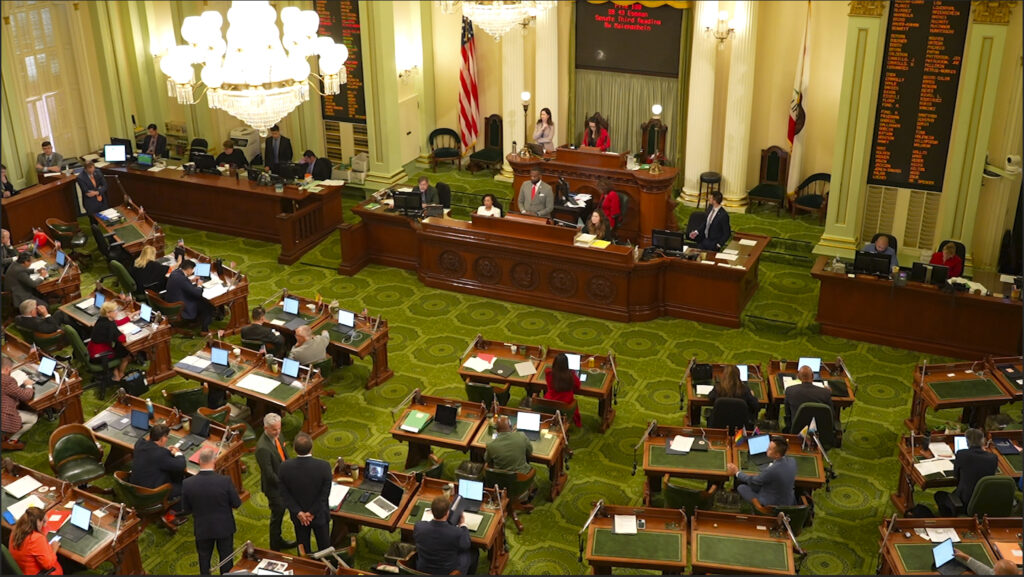
Photo: Carol Davis/Flickr
California public school and community college district voters approved $20 billion of construction loans in 2022, with more passing in 2023, using the Proposition 39 financing capability. The California Association of Bond Oversight Committees (CABOC) estimates that a total of $197.8 billion of this type of construction loan now exists.
Proposition 39 made it easier to pass bond measures, but it also created a new emphasis on vigorous taxpayer oversight of construction expenditures. Indeed, when Proposition 39 was presented to the voters, the Legislature created a quid pro quo scenario, reducing the bond approval level to 55% from two-thirds, but requiring extensive taxpayer oversight and public visibility.
This oversight includes a performance audit that “… shall be conducted in accordance with the Government Auditing Standards issued by the Comptroller General of the United States for financial and performance audits.” Education code section 15286
When a standards-compliant performance audit is not present, however, laws can be broken, crimes committed, and voters are left to conclude that their tax money is not being spent wisely. A search engine’s worth of indictments, allegations and plea deals are discoverable on the internet, relating to school districts and construction. This is in addition to the traditional occurrence of excessive change orders, cost overruns and delivery delays.
For instance, the state’s Fiscal Crisis and Management Assistance Team (FCMAT) uncovered evidence of fraud, misappropriation or other illegal activities in 65% of the “extraordinary audits” it conducted between 2018 and 2023. While not all construction related, these cases were referred to law enforcement authorities.
In Santa Barbara County, an assistant school district superintendent and three construction company executives were charged with 74 counts of misappropriation of public monies, embezzlement of public funds, diversion of construction funds and grand theft. In San Francisco, a former school district facilities manager overseeing a district construction account pleaded guilty to fraud and tax evasion in an alleged scheme to divert $500,000 out of a construction escrow account.
But the greater mystery may be when there is no oversight performance audit and wrong-doing goes unexamined.
A statewide compliance survey released in October 2022 revealed that performance audits produced by most school districts fail to sufficiently comply with the required standards, according to a common sense, reasonable evaluation. Missing and non-standards-compliant performance audits deprive the public and those overseeing construction bond programs of valuable information that could be used to meaningfully evaluate the expenditure of hundreds of millions of dollars of public funds.
Many performance audits are just over two-pages in length, and include a single compliance audit objective. They typically fail to audit or provide information on program effectiveness and results, internal control or any prospective analysis of the construction program, which is usually the largest construction program ever undertaken by a school district.
The comptroller general’s government auditing standards manual describes how government officials, such as school districts, should use a performance audit to assure the public that its money is well-spent. These standards describe the categories of audit objectives: program effectiveness and results; internal control; compliance; and prospective analysis. It also lists 32 examples of audit objectives, illustrating each of the four categories. This information provides objective analysis, findings and conclusions in order to improve program performance and operations, reduce costs and increase public accountability.
School and community college districts engaging firms to produce the Proposition 39 performance audits should include audit objectives from a broad array of audit categories, so that the public truly understands the expenditure of billions of dollars of taxpayer funds.
And taxpayers should carefully review the Proposition 39 construction bond program documents of their school and community college districts, including the performance audit, which are required by law to be posted on district websites.
•••
Bryan Scott serves on two citizens’ bond oversight committees in Brentwood, and in 2023 he was named the Member of the Year by the California Association of Bond Oversight Committees. He is the creator of “Becoming an Effective Watchdog: A Necessary Primer for California School Construction Bond Oversight.”
The opinions expressed in this commentary represent those of the author. If you would like to submit a commentary, please review our guidelines and contact us.






